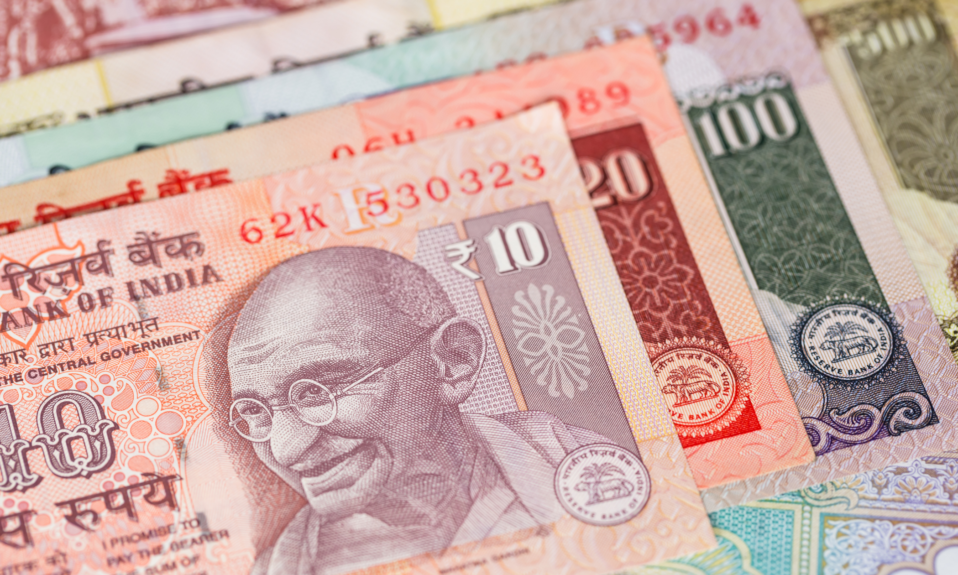
All the latest and most relevant employment in India statistics show that the job market is looking pretty promising in some sectors, while others industries and professions are slowly, but surely dying out.
TOP 10 Fascinating Facts about Unemployment in India
- 46.3% is the India Labour Force Participation Rate as of December 2020, which is a 3% drop since the same period last year (down from 49.3%)
- 7.9% is India’s current unemployment rate at a national level, covering all industries and sectors of work
- 47.1% is Puducherry’s state unemployment rate as of July 2021, which is the highest unemployment rate in India
- 92,1% of Indian total working population is currently employed in one form or another, as of July 2021
- INR 372.33 ($5) is the estimated average daily wage for Indian workers by the end of 2021
- 68 million employees are currently registered in India, with many millions more unofficial workers
- 9.9% is the current Labour Productivity Growth Rate in India
- 20.3% is the labour productivity growth rate in India for the mining and quarrying sector
- 4.2% is the labour productivity growth rate for the construction industry
- $2.651 trillion is India’s annual GDP (Gross Domestic Product)
7.9% is India’s current unemployment rate at a national level, covering all industries and sectors of work
It’s up to each and everyone of us to choose a career in order to make a living, and that depends on a lot of factors. You could be very talented in one domain that is not accessible or well paid in your region, or you could be stuck working a job you don’t like, but given the good pay, you’re not thinking about changing anything.
47.1% is Puducherry’s state unemployment rate as of July 2021, which is the highest unemployment rate in India
No matter the situation you find yourself in, you should always consider looking over employment in India statistics in order to keep yourself in the loop with all the available opportunities.
0% is the unemployment rate in the Indian state of Sikkim, which only covers around 0.216% of the country’s total area
Let’s go over some of the most important employment data in India together and check out some fascinating facts about the job market.
General Employment Stats in India
Judging by the working population in India, we can easily come to the conclusion that some states have a way larger job offering for its inhabitants than others, causing a pretty significant discrepancy in the job market.
What is the percentage of employment in India?
92.1% of Indian total working population is currently employed, as of July 2021
This percentage refers to people who are able to work, not to the entire population of India.
What is the unemployment rate in India in 2020?
7.11% is the official unemployment rate in India for the year 2020
Looking at the current job market in India, we can easily see the impact caused by the COVID-19 pandemic in 2020 and in 2021.
What is the largest employment generating sector In India?ÂÂÂÂÂÂÂÂÂÂ
With 41.19% of the total workforce, the agriculture industry is the largest employment generating sector in India today
Job statistics show that this sector will continue to lead the Indian job market for the foreseeable future.
What percentage of Indian population is employed?
Around 39.1% of India’s total population is currently officially employed
That leaves a staggering 60.9% of people still without a job, or without the need of a workplace.
501 million workers were registered in India, as of 2020
India comes in second place when it comes to the numbers of workers, only after China.
1926 is the year when the Trade Unions Act was officially passed in India
This gave many new rights to workers at a national level and protected them against some abuse coming from their employers.
Over 59,000 trade unions were registered in India, according to the latest reports
These numbers were last surveyed back in 1997, so the numbers of trade unions could be exponentially higher.
Employment Growth Rate in India: by the numbers
Even though India is currently still struggling with the COVID-19 pandemic and the virus’ mutations, job growth in India is very noticeable in many industries.
| Period | Rate of Growth % | Rate of Growth of Population of Labour Force % |
| 1972-73 to 1977-78 |  2.27 | 2.94 |
| 1977-78 to 1983          | 2.19 | 2.04 |
| 1983 to 1987-88 | 2.14 | 1.74 |
| (1983 to 1993-94) | 2.12 | 2.05 |
| 1993-94 to 1999-2000 | 1.93 | 1.03 |
| Month Unemployment Rate (%) | India | Urban | Rural |
|---|---|---|---|
| Jun 2021 | 9.17 | 10.07 | 8.75 |
| May 2021 |  11.90 | 14.73 | 10.63 |
| Apr 2021 |  7.97 | 9.78 | 7.13 |
| Mar 2021 | 6.50 | 7.27 | 6.15 |
| Feb 2021 | 6.89 | 6.99 | 6.85 |
| Jan 2021 | 6.52 | 8.09 | 5.81 |
| Dec 2020 | 9.06 | 8.84 | 9.15 |
| Nov 2020 | 6.50 | 7.07 | 6.24 |
| Oct 2020 | 7.02 | 7.18 | 6.95 |
| Sep 2020 | 6.68 | 8.45 | 5.88 |
| Aug 2020 | 8.35 | 9.83 | 7.65 |
| Jul 2020 | 7.40 | 9.37 | 6.51 |
Types of Employment in India
Looking at the total jobs in India, you can state, without a doubt, that there’s something for everyone out there. You just need to be the right person at the right time in order to land that perfect job.
20.3% is the labour productivity growth rate in India for the mining and quarrying sector
This is the highest and fastest growing work sector in the country, as of 2019.
4.2% is the labour productivity growth rate for the construction industry
This is the sector with the lowest growth rate from the Indian workforce.
41.19% of all Indian workers are employed in the agricultural sector
That’s almost half of the total registered workforce in India.
26.18% is the share of workers employed by the industry sector
Almost 1 out of every 4 Indian workers are employed in the industry sector.
32.33% of total labour force in India works in the service sector
That’s roughly 1 out of every 3 Indian workers who are employed by companies which operate in the service sector.
94% of Indian workers are employed in unincorporated, unorganised enterprisesÂÂÂÂÂÂÂÂÂÂ
These companies can be anything from pushcart vendors to home-based diamond and gem polishing operations.
There is an estimate of 10.1 million child labourers in India, according to Census 2011
Out of these 10.1 million, 6.6 million are boys, while 4.5 million are girls.
India Job Creation Statistics
We live in a very fast-paced society, where technological advancements lead to the creation of some jobs and the removal of many others. Following job trends in India is the easiest way to notice what industry will be in need of jobs in the future, and what sectors will disappear from the job market.
India is the 5th largest economy in the world and one of the fastest growing ones as well
It is recognized as part of the G-20 major economies, meaning that more jobs will be created in the upcoming years.
$2.651 trillion is India’s annual GDP (Gross Domestic Product)
The country is also part of BRIC, along 3 other countries: Brazil, Russia, and China.
6.68% is the annual GDP growth rate for India
And the average GDP per capita in India is INR 147518.34 ($1,980).
3.28% is India’s share of the world’s total GDP per annum
While the country’s population is estimated at around 1.366 billion people.
The Trend of Organized Labour in India
Labour Statistics India
Analyzing labour statistics in India is one of the best ways of seeing what sectors will bloom in the next couple of years and what career options you should consider to make a nice living.
9.9% is the current Labour Productivity Growth Rate in India
This data is based on the latest studies provided by Statista.com.
47.3% is the percentage of the Worker Population Ratio in India for the time period between 2018 and 2019
The number refers to the fiscal year, according to the Periodic Labour Force Survey (PLFS).
The Minimum Wages Act of India was passed in 1948ÂÂÂÂÂÂÂÂÂÂ
Over 70 years since the law has passed, there are still plenty of companies that don’t respect this act.
The minimum wage in India ranges from INR 143 ($1.92) to INR 1120 ($15) per one day of work
However, minimum wages at government level vary from state to state, and from sector to sector.
TOP 16 Employers in India
Company Name Number of Employees Year Industry Country
1 Indian Railways 1.4 million 2021 Transportation India
2 Sahara India Pariwar 1.4 million 2021 Conglomerate India
3 Indian Armed Forces 1.3 million 2021 Defence India
4 India Post 466,000 2021 Communications India
5 Tata Consultancy Services 417,000 2021 IT Industry India
6 QUESS Corp 363,000 2021 Service India
7 Coal India 272,000 2021 Coal Mining India
8 State Bank of India 250,000 2021 Banking India
9 Infosys 240,000 2021 IT Industry India
10 Reliance Industries 236,334 2021 Conglomerate India
11 Wipro 175,000 2021 IT Industry India
12 HCL 160,000 2021 IT Industry India
13 Tech Mahindra 125,000 2021 IT Industry India
14 IBM 110,000 2021 IT Industry United States
15 HDFC Bank 105,000 2021 Banking India
16 Punjab National Bank 103,000 2021 Government Bank India
Employment rate in India
Current Previous Highest Lowest Dates Unit Frequency
47.30 46.80 50.80 46.80 2012 – 2019 percent Yearly
India Labour Last Previous Highest Lowest Unit
Unemployment Rate 11.90 8.00 23.50 6.50 percent
Labor Force Participation Rate 49.80 50.40 63.70 49.80 percent
Population 1347.12 1332.90 1347.12 359.00 million
Retirement Age Women 60.00 60.00 60.00 60.00 year
Retirement Age Men 60.00 60.00 60.00 60.00 year
Youth Unemployment Rate 34.70 21.10 34.70 19.20 percent
Minimum Wages 178.00 178.00 178.00 35.00 INR/Day
Employment Rate 47.30 46.80 50.80 46.80 percent
Unemployment Rate (%) per Indian States (India) as of June 2021
Andhra Pradesh 7.5
Assam 0.6
Bihar 10.5
Chhattisgarh 2.6
Delhi 8.8
Goa 17.7
Gujarat 1.8
Haryana 27.9
Himachal Pradesh 16.3
Jammu & Kashmir 10.6
Jharkhand 12.8
Karnataka 5.6
Kerala 15.8
Madhya Pradesh 2.3
Maharashtra 4.4
Meghalaya 2.8
Odisha 3.5
Puducherry 47.1
Punjab 8.2
Rajasthan 26.2
Sikkim 0.0
Tamil Nadu 8.3
Telangana 4.8
Tripura 9.6
Uttar Pradesh 4.3
Uttarakhand 4.8
West Bengal 22.1
How many daily wages Labour India?
INR 372.33 ($5) is the estimated average daily wage for Indian workers by the end of 2021.
These numbers are based on global macro models and analysts expectations. In the long-term, the India Average Daily Wage Rate is projected to reach around INR 397.00 ($5.33) by 2022.
What is the percentage of Labour in India?
46.3% is the India Labour Force Participation Rate as of December 2020, which is a 3% drop since the same period last year (down from 49.3%)
From December 1990 until December 2020 (a 30-year timespan), the India Labour Force Participation Rate has been updated every year with an average rate of 57.5%.
How much a daily wage worker earns in India?
INR 419.00 ($5.62) daily is the projected wage for workers in India by 2023, according to the latest econometric models.
This means that the average daily wage of Indian workers will continue to grow during the upcoming years.
How many employees are salaried in India?
68 million employees are currently registered in India, with many millions more unofficial workers
In 2019, the numbers reached 87 million, which is 22% more than the current employment rate in India.
COVID-19 Impact on Employment in India
COVID-19 has taken a huge toll on India’s economy (and the global economy for that matter), but some sectors were more affected than others. India is still recovering from this pandemic, and chances are that we’ll be going back on a positive trend in the not so distant future.
1.84% is the increase in India’s unemployment rate since the COVID-19 pandemic took over the world
As of 2020, the country’s unemployment rate is 7.11%, a slight rise as of the same period in 2019, when the unemployment rate was 5.27%.
23.52% is India’s all-time high unemployment rate after COVID-19, reached in April 2020
The data has been made available by the Centre for Monitoring Indian Economy.
Conclusion
We live in a very uncertain time and age, where the job market can fluctuate very often. Today you may be working at one large corporation and the next day, the same company can go bankrupt and lay off all of their employees.
But tough times also offer huge opportunities for people who are always looking at how the employment in India statistics change from one quarter to another. Sometimes, analyzing these stats can offer huge insights into what industries are about to skyrocket.
Knowing how the Indian job market will evolve will give you much better chances of securing a long lasting and high paying job for decades to come, not just for the next year or two. Stay focused on your goals and your dream job will appear, sooner or later. Just don’t forget to work hard and apply for the job you want!
Sources:
1. www.Statista.com
2. https://niti.gov.in/
3. http://mospi.nic.in/
4. https://www.nationmaster.com/
5. https://labour.gov.in/annual-reports
6. https://www.britannica.com/
7. https://www.moneycontrol.com/
8. https://censusindia.gov.in/
9. https://tradingeconomics.com
10. https://www.tribuneindia.com/




